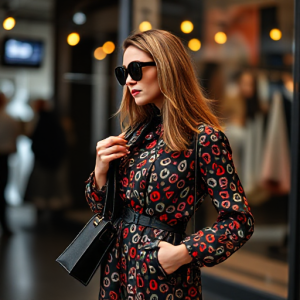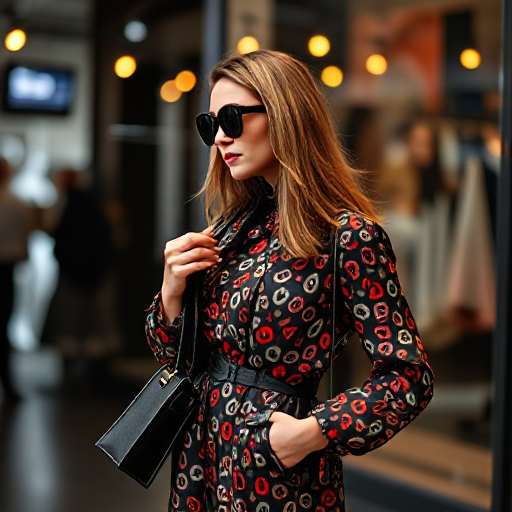
Social media has revolutionized the fashion industry, providing brands with direct access to millions of potential customers worldwide. With the rise of platforms like Instagram, TikTok, Pinterest, and Facebook, fashion brands can create visually compelling content, engage with their audience, and drive sales more effectively than ever before. This article explores social media marketing strategies for fashion brands, best practices, and trends shaping the industry.
The Importance of Social Media in Fashion Marketing
Social media is crucial for fashion brands for several reasons:
- Brand Awareness – Platforms like Instagram and TikTok allow fashion brands to showcase their aesthetics and reach a global audience.
- Customer Engagement – Social media fosters direct interaction with consumers, strengthening brand loyalty.
- E-commerce Integration – Many social platforms now feature shopping capabilities, enabling seamless purchasing experiences.
- Influencer Collaborations – Working with influencers helps brands expand their reach and credibility.
- Trend Monitoring – Social media provides real-time insights into emerging fashion trends and consumer preferences.
Best Social Media Platforms for Fashion Brands
Each platform serves a unique purpose in fashion marketing:
- Instagram – Ideal for high-quality images, reels, and shopping features.
- TikTok – Best for viral trends, short-form video content, and influencer marketing.
- Pinterest – Great for inspiration boards and directing traffic to websites.
- Facebook – Useful for community building and targeted advertising.
- Twitter/X – Suitable for brand updates, customer service, and trend discussions.
- LinkedIn – Helpful for B2B fashion marketing, networking, and industry thought leadership.
Effective Social Media Marketing Strategies for Fashion Brands
1. Create High-Quality Visual Content
Fashion thrives on aesthetics. Invest in professional photography, engaging videos, and eye-catching designs to maintain a strong brand identity.
2. Leverage Influencer Marketing
Collaborate with fashion influencers and micro-influencers to expand your reach. Authentic partnerships often lead to higher engagement and trust among consumers.
3. Engage with Your Audience
Encourage interactions through polls, Q&A sessions, live streams, and user-generated content. Respond to comments and messages to create a loyal community.
4. Utilize Social Commerce Features
Platforms like Instagram and TikTok offer in-app shopping experiences. Optimize your product listings, create shoppable posts, and run targeted ads.
5. Implement Data-Driven Marketing
Track key performance metrics such as engagement rates, conversions, and audience demographics. Use analytics tools to refine your strategies and improve ROI.
6. Run Contests and Giveaways
Hosting giveaways boosts engagement, attracts new followers, and increases brand visibility. Ensure the contests align with your brand identity and target audience.
7. Stay Consistent with Posting
Develop a content calendar and post regularly to keep your audience engaged. Use a mix of posts, including behind-the-scenes content, fashion tips, and seasonal promotions.
8. Use Hashtags and SEO Optimization
Hashtags improve discoverability, while SEO-friendly captions enhance searchability. Research trending hashtags and incorporate relevant keywords.
9. Experiment with Video Marketing
Short-form videos, tutorials, fashion hauls, and behind-the-scenes footage perform well on TikTok and Instagram Reels. Video content boosts engagement and reach.
10. Partner with Fashion Events and Collaborations
Engage in fashion weeks, virtual events, and brand collaborations to increase credibility and exposure.
Emerging Trends in Fashion Social Media Marketing
- AI and Personalization – AI-powered recommendations and chatbots enhance customer experience.
- Live Shopping – Livestream sales are becoming a powerful tool for real-time engagement.
- Sustainability and Ethical Fashion – Consumers are more conscious about sustainability, making transparency crucial.
- Augmented Reality (AR) Try-Ons – Virtual try-ons enhance customer confidence and reduce return rates.
- User-Generated Content (UGC) – Customers sharing their own fashion styles helps build authenticity and trust.
Social media marketing is a game-changer for the fashion industry, offering endless opportunities for growth, engagement, and sales. By leveraging the right platforms, creating high-quality content, and staying ahead of emerging trends, fashion brands can effectively connect with their audience and build a lasting presence in the digital world.
